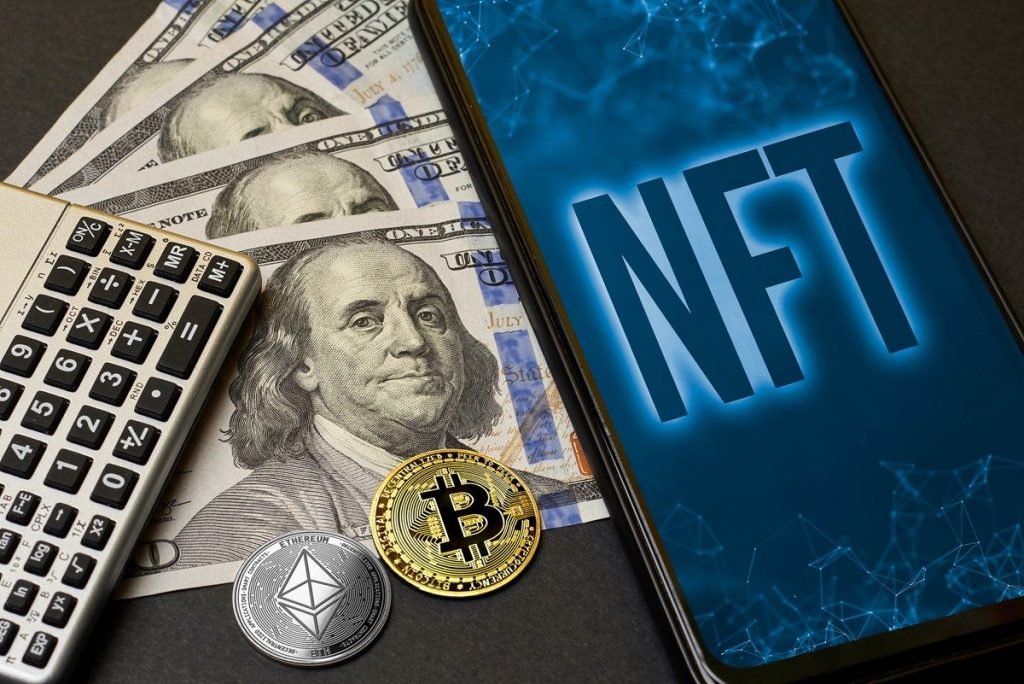Exploring Money Laundering in the Metaverse: Insights on NFTs and DeFi
In Brief
The findings indicate that the predominant method for laundering money is via Non-Fungible Tokens (NFTs).
Addressing money laundering within the Metaverse is a multifaceted challenge and lacks a straightforward remedy.
Research has shown that approximately 17 million Ethereum addresses are implicated in money laundering, highlighting a significant concern in the digital space. Notably, this figure emerges from an ecosystem that has only been operational for a few years. The study confirms that NFTs are the leading vehicle for these illicit activities. Unique digital assets such as NFTs can embody tangible items, including art and collectibles.

- What exactly is Web 3.0? How does it facilitate potential money laundering techniques?
- What makes NFTs appealing as tools for laundering money?
- What strategies can be employed to combat money laundering in the Metaverse?
- How IDcentral can play a pivotal role in maintaining compliance within the Metaverse
- Conclusion
Over the past year, a notable increase in the use of DeFi platforms for laundering operations has emerged. In 2021 alone, DeFi protocols accounted for 17% of all cryptocurrency transactions from suspicious sources, an exponential rise from just 2% the year before.
In 2021, NFT sales soared to more than $25 billion, with individual pieces fetching staggering prices up to $90 million. Yet, the landscape has been marred by significant fraud cases in 2022, including a jaw-dropping $600 million theft from an NFT gaming venture in March and the $2.8 million hijacking from the Bored Ape Yacht Club’s Instagram in April, sparking market unease. Axie Infinity The absence of Know Your Customer (KYC) checks and Anti-Money Laundering (AML) protocols has allowed money laundering to flourish unchecked across Web 3.0 platforms. This article aims to unpack the underlying causes of this issue while suggesting actionable measures to mitigate it.
Web 3.0 represents a decentralised economic model underpinned by blockchain technology, eliminating the need for intermediaries for trust and permission. This advancement is leading to increased adoption of cryptocurrencies and NFTs leveraging the same foundational tech.
What exactly is Web 3.0? How does it facilitate potential money laundering techniques?
The inherent decentralisation in Web 3.0 complicates the tracking and oversight of money laundering efforts. Criminals exploit this feature by dispersing their activities across various wallets and addresses, creating layers of obscurity that hinder investigation.
A proactive approach to thwarting money laundering includes implementing robust KYC protocols. By mandating identity verifications, businesses can flag potential indicators of illicit activity. Moreover, leveraging advanced data analytics to monitor transactional behavior can help identify suspicious patterns.
While Web 3.0 presents unique challenges regarding money laundering oversight, it simultaneously offers a chance to harness its features for a safer experience. By understanding the risks and embracing recommended preventive measures, we can work towards securing Web 3.0 for all users.
NFTs function much like bearer bonds, where possession of the NFT equates to ownership of the asset. This characteristic makes them particularly appealing for money laundering, as ownership transfers do not necessitate the involvement of financial institutions. Additionally, NFTs can be divided into smaller fractions, facilitating the laundering of smaller amounts.
What makes NFTs appealing as tools for laundering money?

Another factor contributing to NFTs' allure for laundering activities is their capability to symbolize genuine assets. This characteristic complicates the process for authorities trying to trace the origins of illicit funds.
The advent of blockchain technology has drastically simplified the process of conducting discreet financial transactions. For these reasons, the US Financial Crimes Enforcement Network (FinCEN) has flagged the emerging digital art sector as a significant risk zone for money laundering and other financial crimes.
A recent report estimates that around $6 billion of money laundering is occurring on the Ethereum network. This figure is quite shocking, particularly given Ethereum's brief history in the cryptocurrency realm. The primary mode of laundering identified continues to be through Non-Fungible Tokens (NFTs).
The intricate processes involved in money laundering within the metaverse are dynamic and rapid, often involving international borders, which complicates detection efforts with current technology.
What strategies can be employed to combat money laundering in the Metaverse?
Consequently, it's crucial to revise existing AML regulations and integrate cutting-edge tech solutions like artificial intelligence and machine learning. Techniques such as transaction monitoring and identity verification in the Metaverse can effectively leverage AI capabilities.
Greater exploration is crucial to figure out how these advanced technologies can best be utilized in the Metaverse. In the interim, businesses ought to incorporate these tools into their AML compliance strategies.
How IDcentral ensures adherence to regulations within the Metaverse
IDcentral utilizes digital processes for its eKYC and KYX solutions to confirm user identity, age, and documentation. This system helps in efficiently identifying and preventing money laundering within the Metaverse, especially regarding non-fungible tokens (NFTs). Through a robust KYX mechanism that employs machine learning and advanced blockchain analytics, IDcentral can detect irregular activities and safeguard users from fraud.
Besides eKYC and KYX solutions, IDcentral also provides users access to decentralized finance (DeFi) tools, enabling secure and responsible asset management within the Metaverse. DeFi offers unprecedented flexibility, transparency, and control over finances. By supplying these essential services, IDcentral contributes to compliance and security within the ever-evolving Metaverse landscape.
Tackling money laundering in the Metaverse is undeniably complex and lacks a straightforward solution. However, if businesses heighten their awareness of potential risks and adopt strategies previously discussed, it could lead to a safer Metaverse for all users.
Conclusion
Exploring the Top 5 NFT Staking Projects for 2022: Weighing the Pros and Cons
Related articles:
- Fungible vs. Non-Fungible Tokens (NFTs): Clarifying the Key Differences
- Top 15 NFT & Crypto Marketing Agencies for 2022
- How to Store NFTs: The Ultimate Guide 2022
- Please bear in mind that the information offered on this page is not to be construed as legal, financial, investment, or any other form of professional advice. It's paramount to only invest what you can afford to lose, and seeking independent financial guidance is advisable if uncertainty arises. We recommend checking the issuer's or advertiser's terms and conditions, as well as their support resources for additional information. At MetaversePost, we strive for accurate and impartial journalism, yet market circumstances can shift without warning.
Disclaimer
In line with the Trust Project guidelines Ken Gitonga expresses his passion for writing through various forms of crypto-related content, including articles focused on SEO, technical analysis, news updates, Web3 explorations, cryptocurrency forecasts, and white paper drafting. With over three years of experience in SEO and content marketing, Ken has successfully assisted numerous businesses in enhancing their online visibility and traffic.




